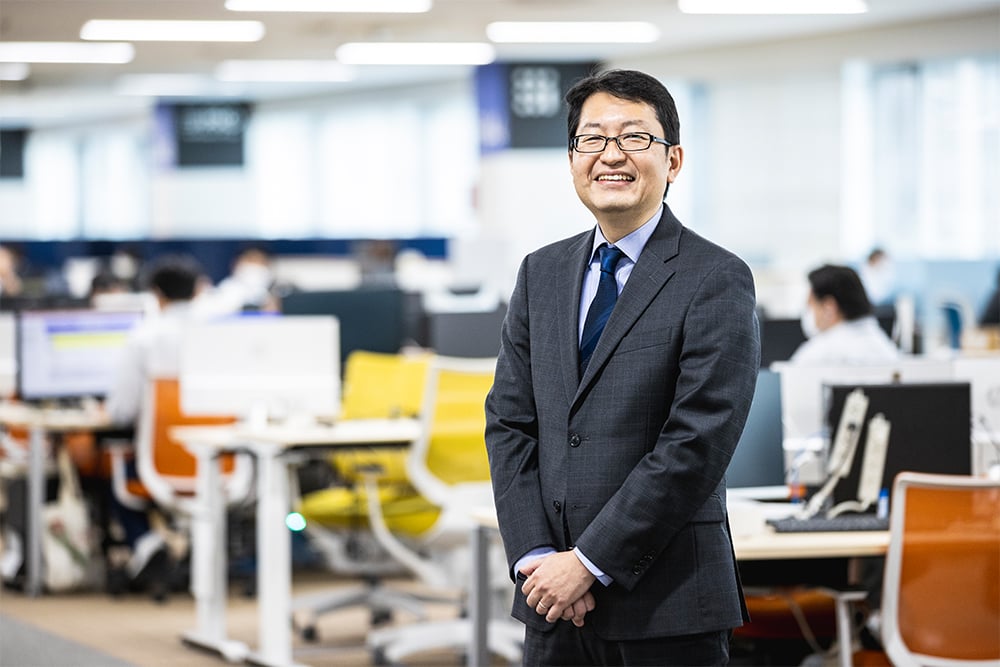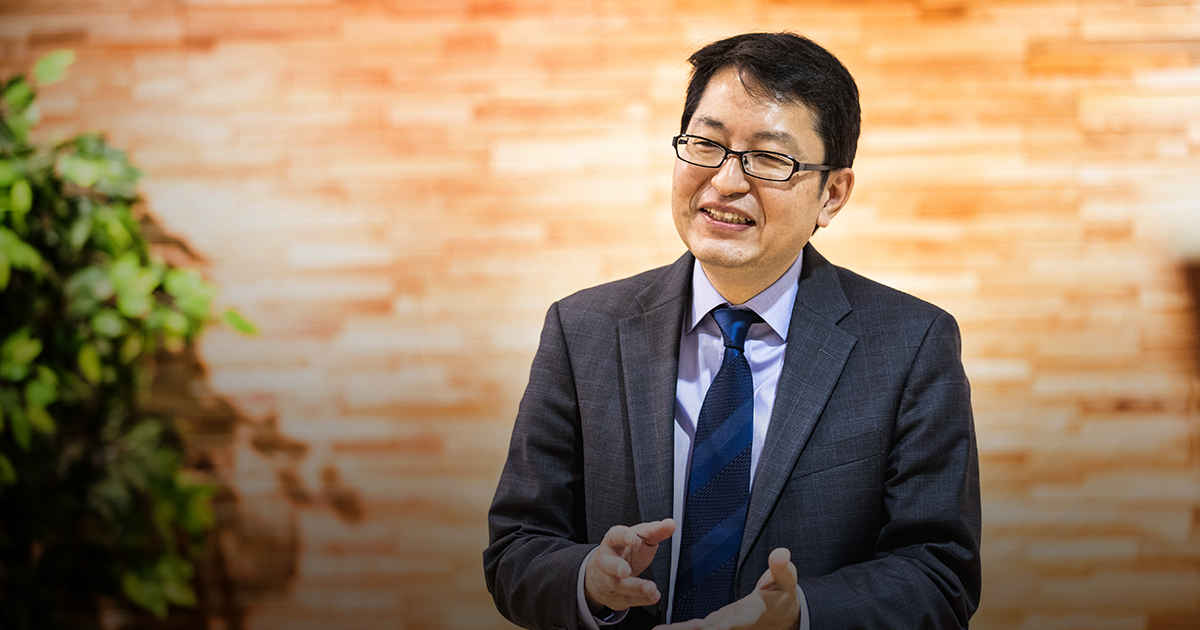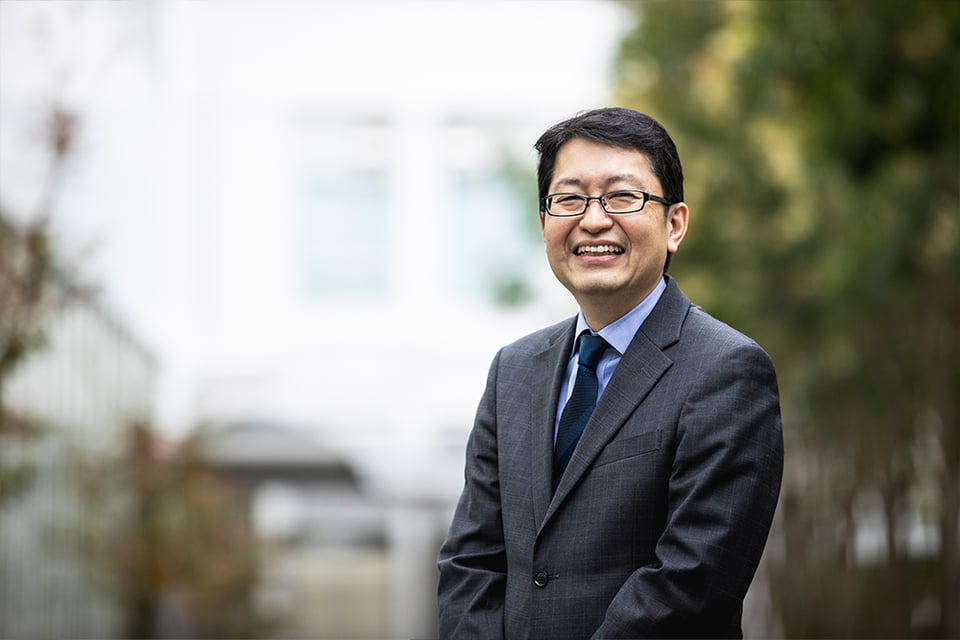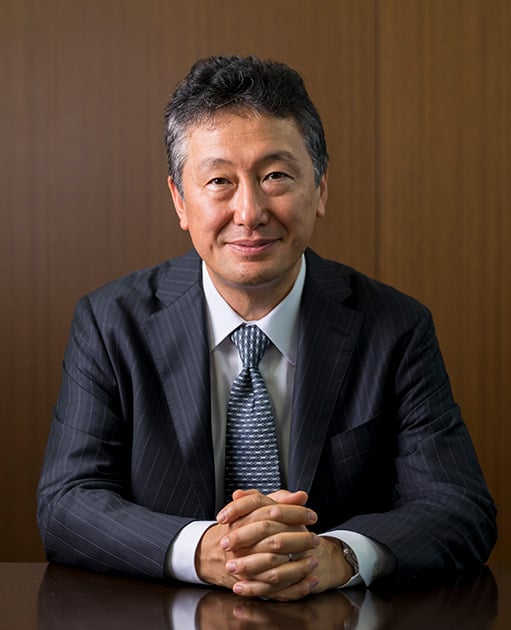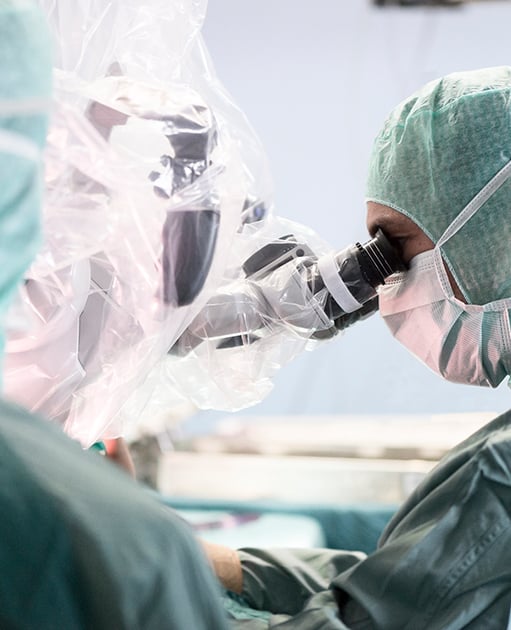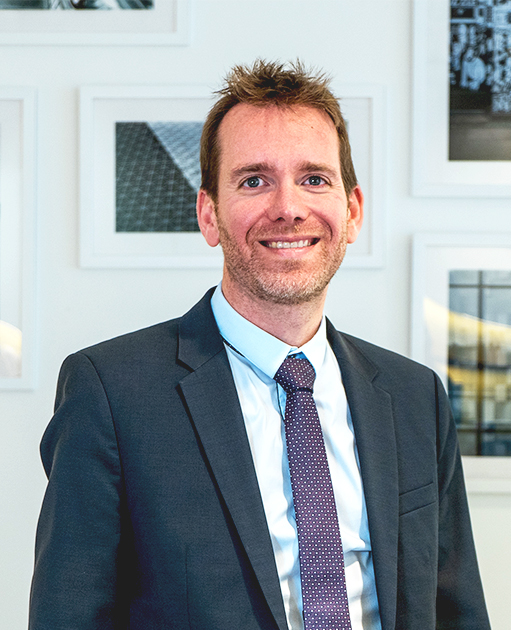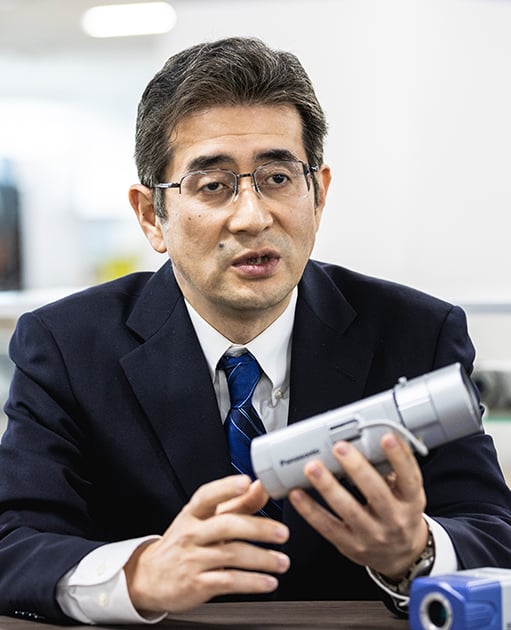“According to Japanese fortune-telling based on the characters in my name, I have a very lucky name, will be blessed with great co-workers who can help me grow as a person, and achieve great success. And that’s exactly what’s happening at i-PRO,” says Hideaki Takahashi with a laugh. Using his experience in software development and system engineering, he was somewhat of a hero among customers during the early days of i-PRO. He currently serves as head of the Corporate Software in the Research & Development, and is active throughout the world overseeing personnel training, process innovation and core technology creation, all in relation to software. We asked Mr. Takahashi what it takes for an i-PRO software engineer to become a global leader.
Learning in the Lab at University and Practical Experience with Clients Gave Me a Solid Foundation as an Engineer
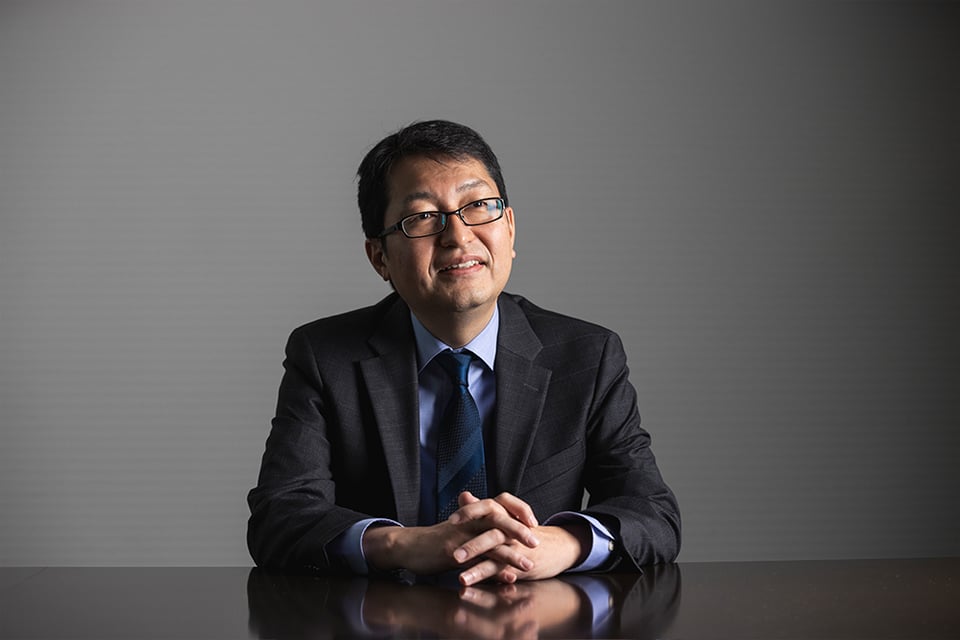
What made you take fuzzy logic, software design and safety engineering at university?
Around that time fuzzy logic was just beginning to make its way into home appliances and there was a push to make machines more “human.” It interested me, so I set about finding the world’s leading expert in fuzzy logic and discovered it was Prof. Masao Mukaidono at Meiji University, so I enrolled there.
Tell us about your time at university.
I practically lived in Prof. Mukaidono’s lab. I learned so much from him and senior students. I’ve been using what I learned there—the philosophy, culture, and the true value and meaning of information science—for the past 25 years in my work. The significance of design for software reliability and user-friendliness was constantly drummed into us. Even now, if I have a problem, I’ll contact him, or maybe alumni or old classmates. They, and what I learned there, are my real assets. And, I also met my wife there!
What type of work were you involved in after you joined Panasonic?
I was first assigned to a department that developed software for surveillance systems. But I was a smart aleck and insisted on doing system engineering that would enable me to better understand customers, because I believe that the ultimate goal of software development is to serve customers. After much begging I was reassigned. I felt so strongly about the need to solve problems for customers, and I wanted to contribute to society. The experience I gained working in this area is also one of my greatest assets.
My parents were not rich by any means, but they always told me to look after the people around me and contribute something to society. Maybe it was their influence, but I’ve always felt that real prosperity comes from the relationships we build with others, rather than just the accumulation of wealth. My parents made my education a priority in their lives, which is the reason I am who I am today. So, I owe it to them to learn as much as I can, and I want to pay back the debt of gratitude that I owe my teachers, friends, family and society using what I learn. That’s what motivates me.
Three Important Strategies to Take on the World
The company will change its name to i-PRO in April 2022. How are you going to grow it into a global brand?
In line with our mid-term goals, by the end of FY2022, we want to develop a world-class professional technology team on par with the best in the world. We want to give the company top class software development capabilities. We want to double product quality and the pace of the product development cycle, and develop elemental technology that will enhance corporate value.
What do you mean by “on par with”?
Looking back, it was not clear whether there was a gap between our own level of skill and that of other top-level personnel throughout the world because there was no clear parameters, and in seeking to improve our skills we just relied on past experience. So, we need to determine par—the performance of world-class companies—to see how we compare with that. And you know, I’m encouraged by what I’ve seen, and I’m really confident that we still have room to grow.
With i-PRO, first we took our candidates for leadership roles and started to workshops for them in coordination with other world-class companies. This was to inspire them to compete on a global level. Once they learn that, we have them pass on what they’ve learned to younger colleagues.
For the second mid-term goal, you mentioned speed and quality.
Yes, i-PRO has declared that it will return to its manufacturing roots. To successfully compete in the global market, we have to shorten the product development cycle, which means reforming the development process.
Up until now, software development was carried out as required for each product individually. As our product lineup grew, this meant that the mundane task of repeatedly customizing software robbed our software engineers of precious design time.
We aim to solve this problem through the use of modular software design. This way we can expand our product lineup while streamlining the product development cycle.
Modular software design entails breaking a program down into independent, interchangeable modules, each with a single function. A small team of software engineers then combines these modules using appropriate software development tools and methods, acting independently and making decisions quickly.
In terms of product quality, modular software design leads to increased stability through encapsulation, and productivity is increased through modularization, which eliminates duplication and speeds up software release. This all frees up time for software engineers who can then use their time more productively to innovate.
With the diversification of sensing technology, how do you see it being used in elemental technology?
With the advances in AI technology, we expect there will be greater variety and specificity in how customers use sensing technology. As a system engineer with many years of experience, I believe that the engineers best suited to meeting the increasingly diverse needs of clients are those closest to clients and most familiar with their needs. For that reason, it is just not possible for me and the software engineers at i-PRO to meet the needs of all customers throughout the world. The best we can do is to concentrate on our core technologies and products, such as edge devices, creating cutting-edge technologies that can capture, digitize, and analyze on-site data, and provide these to the many solutions partners who are already close to such clients.
Project System to Challenge Engineers

From this year engineers will work on a per project basis. What is the aim of this?
The software engineers belong to the Corporate Software Department, which I am head of, but once a project starts, the optimal personnel are assigned to it and they work as a team together with personnel from the Product Planning Department. Once the project has been completed, they return to my department. This is the new i-PRO project system.
One of my goals is to ensure equal opportunities for engineers with diverse skill sets. With this new project-based system, engineers who are keen to take on new challenges and grow as professionals get to participate in various projects, gain a diverse range of knowledge and experience, and interact with other project participants whom they might never have worked with before.
As engineers, the way you’ll work will change. Won’t that be a challenge?
Yes, it will be a major change because in some cases people will have been sheltered by their superiors. However, with the new system they’ll need to work as independent professional engineers, so I’m sure they’ll feel some pressure. But, on the whole, they’re doing great.
For me, taking on new challenges is part and parcel of being an engineer, so adopting the project system is just one way to help foster that mindset.
On the other hand, if you’re scared of failure, you’ll never try anything new. And you’ll never grow unless you experience failure. With that in mind, it’s important that we create a workplace where failure is not feared. That creates a supportive atmosphere for engineers as they take on new challengers through the project system.
I want to create a stress-free workplace at i-PRO with solid relationships between people and where all of the information necessary to successfully take on a challenge is readily available. I think it’s hard for engineers to let on that they don’t understand certain things or want to know more about certain things, because they’re worried about what people might think of them. However, the workplace should be where people can open up and share, where opening up and sharing is appreciated, and where people can find help to learn and grow.
Tech Communities - Places to Learn without Fear of Failure
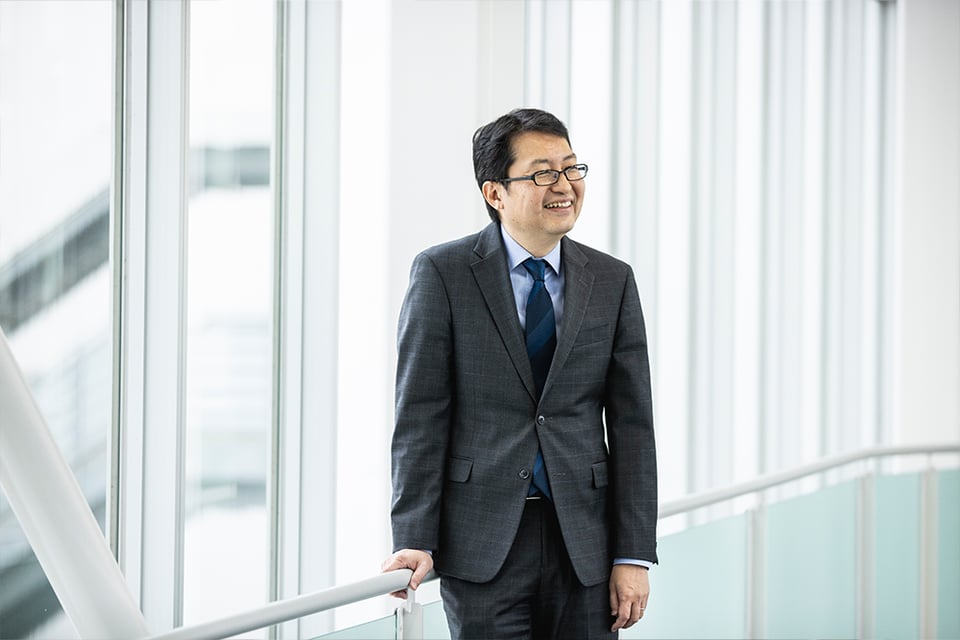
How are you going to set up that kind of workplace?
We launched Tech Communities in July this year to give people the opportunity to take on challenges and learn through trial and error. We currently have 13 communities and all engineers belong to a community, which then becomes their home base. If they wish to learn an additional technology, they can belong to more than one community. When I was a child, my parents used to tell me to study, but I couldn’t do it all alone. So, I hope that all of our engineers will choose to learn from more than one community because doing so will further stimulate them to grow and excel.
I want the Tech Communities to be places of openness, places where people don’t have to worry about being judged or criticized. Places where engineers can build relationships with one another and be honest about what they don’t know and what they want to try. Places where they can share the information required to conquer new challenges and help each other to learn what they need. That’s what I aim to create.
I got my inspiration for the goals of our Tech Communities from the collaborative learning that occurs among the world’s top-level software companies. At the core of their corporate culture is a fervent desire to try new things. Professionals with diverse abilities set high goals, and this pursuit of excellence is driven by a culture of inclusion, where everyone accepts each other. Learning is not limited to one’s own company, but extends to include other companies, which, in fact, also includes us. I would love to have other top-class companies join i-PRO’s Tech Communities and grow together, providing each other with feedback.
Could you explain the types of learning that occurs in Tech Communities?
Well, there’s passive learning and there’s aggressive learning.
An example of passive learning is where we look at software design quality. We look back at the design quality of previous software, and as engineers we think about how it should evolve, without holding any preconceived ideas. As I mentioned earlier, we also have input from experienced people outside the company. My professor from university also teaches the importance of safety in designing systems and software. We receive advice from such people, whether they be researchers or corporate personnel, to further deepen our knowledge of design quality.
As for aggressive learning, we develop software that meets global standards. We learn advanced theory and practice from other software companies. In addition to listening to lectures, we learn by launching a specific project. This process involves developing a product and then running with it until it is usable. Through this we try to absorb the culture of these software development companies, not just copy a tool or mimic their way of doing things.
Specifically, i-PRO’s software technology leaders create opportunities to learn and practice software development together with the world’s top software companies that share our approach. We receive feedback about theory and practice almost every day, which is a reminder to engineers of the gap between our level of ability and that of the world’s top software companies. This, of course, motivates us even more.
Lastly, please tell us your ideal type of i-PRO engineer.
I want our customers and partners to personally know and trust our engineers. I want people to say that they want such and such an engineer to develop a new product for them. When that becomes a reality, I believe we will have become part of a group of artisan-like software engineers. Often people see software engineers as merely a cost per month, but I want them to be a group with diverse artistic sense, to which people cannot assign a figure. In order to achieve this goal, rather than being bound by rules and manuals, we need to improve ourselves together as a team, working to become free and autonomous professionals with world-class abilities.
